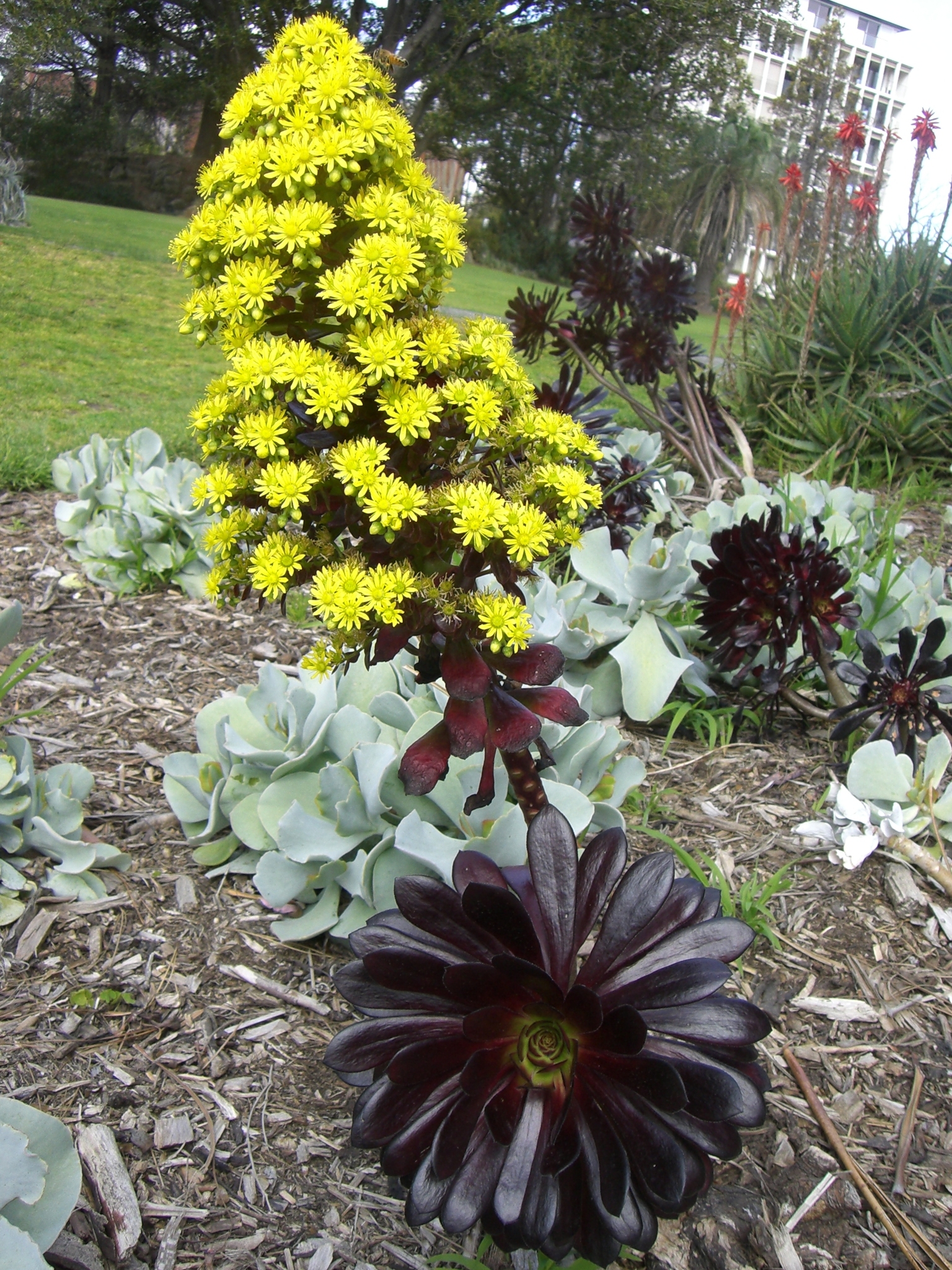
The name used by Dioscorides, probably for A. arboreum.
Perennial soft-wooded shrubs. Leaves alternate in dense terminal rosettes, not deciduous. Flower clusters terminal, much branched. Flowers (6-)7-9(-16)-parted. Sepals basally united, fleshy. Petals spreading, free to slightly united at base, whitish to yellow, sometimes variegated with pink or red. Stamens in 2 whorls of unequal length. Carpels free.
Grown for the interesting leaf rosettes.
About 35 species in the Canary and Atlantic Islands, W Mediterranean, also Morocco, E Africa and S Arabia.
Rosette cuttings or seed.
Leaves in tight rosettes, alternate,margins ciliate or pubescent; flowers mostly 7-9-parted, petals free or basally united.
Liu (1989).
Source: (2002). Crassulaceae. In: . Horticultural Flora of South-eastern Australia. Volume 3. Flowering plants. Dicotyledons. Part 2. The identification of garden and cultivated plants. University of New South Wales Press.
